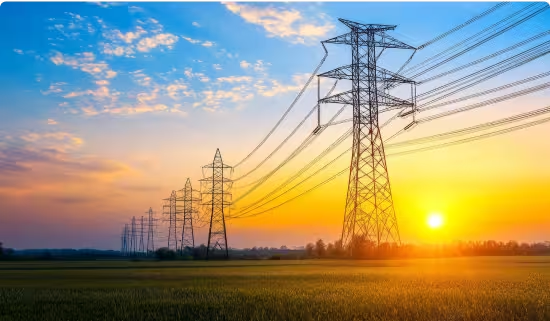
Indonesia Electric Vehicle Charging Equipment Market Outlook to 2026
Driven by influx of investment from abroad coupled with increasing focus on emission control
Region:Asia
Author(s):Viraj Pangam, Tania Bansal
Product Code:KR1125
February 2022
105
About the Report

Competitive Landscape in Indonesia EV Charging Market
Key Topics Covered in the Report
- Overview of EV Market and EV Charging Equipment Market in Indonesia
- Ecosystem of EV Charging Equipment Market in Indonesia
- Market Size of EV Charging Equipment Market in Indonesia (Total EV Charging Equipment Revenue)
- Indonesia EV Charging Equipment Market Segmentation (By Type of Charging, Type of Chargers, Type of Vehicle, Type of Geography, By Sales Channels)
- Cross Comparison of Southeast Asian Countries on EV Adoption and comparison of top players in the EV Charging Equipment Market in Indonesia
- Company Profiles of EV Charger Manufacturers (Overview, Products, Business Streams, Manufacturing Capabilities, Distribution Channels, Recent Projects, Cost Structure, and Awards and Recognitions)
- Growth Drivers and Challenges to Indonesia EV Charging Equipment Industry
- Industry trends and developments
- SWOT Analysis of EV Market
- Rules and Regulations by Government Bodies
- Future Outlook of Industry
- Case Study (PLN, EESL, Alfen)
Products
Key Target Audience
Electricity Supplier
EV Manufacturers
EV Charging Equipment Manufacturers
EV Charging System Operator
Demand side Transport Operators
Government Bodies
Time Period Captured in the Report:
Historical Period: 2016-2021
Forecast Period: 2022-2026F
Companies
Key Segments Covered in Indonesia EV Charging Equipment Industry: -
EV Charging Market Size by
Revenue
Number of charging stations
Indonesia EV Charging Equipment Industry By
Type of Chargers
Type of Charging
Type of Vehicle
Geographic Demand
Type of Manufacturer
Sales Channels
Product Analysis
4W Chargers
2W Chargers
Charging Stations
Pricing Analysis
4W Chargers pricing
2W Chargers pricing
Charging Stations pricing
EV Charging Equipment Players in Indonesia
Delta
ABB
Schneider Electric
Powerindo
Bambang Djaja
Phihong
ANS EVSE
Table of Contents
1. Executive Summary
1.1. How is EV Charging Industry Positioned in Indonesia?
2. Market Overview of EV Charging Industry in Indonesia
2.1. Overview of the Indonesian EV Market
2.2. Overview of EV Adoption in Indonesia
2.3. Overview of the Indonesian EV Charging Market
2.4. EV Charging Infrastructure Value Chain
2.5. Ecosystem of Major Entities in EV Charging Equipment Market
2.6. Difference between SPKLU and SPBKLU
2.7. Business Models of SPKLU
3. Market Size of EV Charging Industry
3.1. Market Size on the basis of Revenue, FY’17-FY’21
3.2. Market Sizing on the basis of revenue through new car sales, FY’17-FY’21
3.3. Market Sizing on the basis of revenue through demand of chargers by type of charging stations, FY’21
4. Market Segmentation of EV Charging Equipment Industry in Indonesia
4.1. Market Segmentation on the basis of Revenue by the Type of Chargers (AC vs DC), FY’21
4.2. Market Segmentation on the basis of Revenue by the Type of Charging (Home, Private and Public), FY’21
4.3. Market Segmentation on the basis of Revenue by the Type of Vehicle (2W, 3W and 4W), FY’21
4.4. Market Segmentation on the basis of Revenue by the Geographic Demand, FY’21
4.5. Market Segmentation on the basis of Revenue by the Type of Sales Channels (Online, Dealers and Direct), FY’21
4.6. Market Segmentation on the basis of Revenue by the Type of Manufacturer (Domestic vs Imported), FY’21
4.7. Market Segmentation on the basis of units of chargers by category (2W, 3W and 4W), FY’17-FY’21
5. Industry Analysis of the Indonesia EV Market
5.1. Trends in Indonesian EV Market
5.2. Issues and Challenges in the Indonesian EV Market
5.3. SWOT Analysis of Indonesian EV Market
5.4. Government Regulations
5.5. Growth Drivers of the Indonesian EV Market
6. Product Analysis
6.1. Type of EV Charging Station
6.2. Type of Plugs
6.3. Description of Plug Socket-Outlets
6.4. Description of EV Charging Types by Output Current
6.5. Description of general standards of charging
6.6. Charging Stations Infrastructure in Indonesia
7. Pricing Analysis
7.1. Pricing Analysis of 4W EV offerings in Indonesia
7.2. Pricing Analysis of 2W EV offerings in Indonesia
7.3. Pricing Analysis of 2W EV chargers in Indonesia
7.4. Pricing Analysis of 4W EV chargers in Indonesia
7.5. Pricing Analysis of chargers by Type
8. Competitive Analysis of the Indonesia EV Market
8.1. Comparative Analysis of electric mobility between Southeast Asian Countries
8.2. Competitive Landscape in Indonesia
8.3. Market Share of Major Equipment Manufacturers
8.4. Charger Offerings by Top Players
8.5. Company Profile of Delta
8.6. Company Profile of ABB
8.7. Company Profile of Schneider Electric
9. Case Study
9.1. Case study of PLN
9.2. Case study of EESL
9.3. Case study of Alfen
10. Future Outlook and Projections of the Industry, till 2026
10.1. Future Outlook of Indonesia Electric Vehicle Market, FY’26
10.2. Future Outlook of BEV and E Scooter Sales, FY’22- FY’26
10.3. Future Outlook of E Rickshaw and E Taxi Sales, FY’22- FY’26
10.4. Market Segmentation on the basis of Revenue by the Type of Chargers (AC vs DC), FY’26
10.5. Market Segmentation on the basis of Revenue by the Type of Charging (Home, Private and Public), FY’26
10.6. Market Segmentation on the basis of Revenue by the Type of Vehicle (2W, 3W and 4W), FY’26
10.7. Market Segmentation on the basis of Revenue by the Geographic Demand, FY’26
10.8. Market Segmentation on the basis of Revenue by the Type of Sales Channels (Online, Dealers and Direct), FY’26
10.9. Market Segmentation on the basis of Revenue by the Type of Manufacturer (Domestic vs Imported), FY’26
10.10. Future Outlook of growth of charging stations FY’22- FY’26
11. Analyst Recommendations
11.1. Analyst Recommendations- Gap Analysis
11.2. Analyst Recommendations- Market Model
11.3. Analyst Recommendations- Sustainable Future
12. Research Methodology
12.1. Market Definition and Assumptions
12.2. Abbreviations
12.3. Market Sizing Approach
12.4. Consolidated Research Approach
12.5. Understanding Market Potential through In-Depth Interviews
12.6. Limitations and Future Conclusion
Disclaimer
Contact Us
Why Buy From Us?

What makes us stand out is that our consultants follows Robust, Refine and Result (RRR) methodology. i.e. Robust for clear definitions, approaches and sanity checking, Refine for differentiating respondents facts and opinions and Result for presenting data with story

We have set a benchmark in the industry by offering our clients with syndicated and customized market research reports featuring coverage of entire market as well as meticulous research and analyst insights.

While we don't replace traditional research, we flip the method upside down. Our dual approach of Top Bottom & Bottom Top ensures quality deliverable by not just verifying company fundamentals but also looking at the sector and macroeconomic factors.

With one step in the future, our research team constantly tries to show you the bigger picture. We help with some of the tough questions you may encounter along the way: How is the industry positioned? Best marketing channel? KPI's of competitors? By aligning every element, we help maximize success.

Our report gives you instant access to the answers and sources that other companies might choose to hide. We elaborate each steps of research methodology we have used and showcase you the sample size to earn your trust.

If you need any support, we are here! We pride ourselves on universe strength, data quality, and quick, friendly, and professional service.















